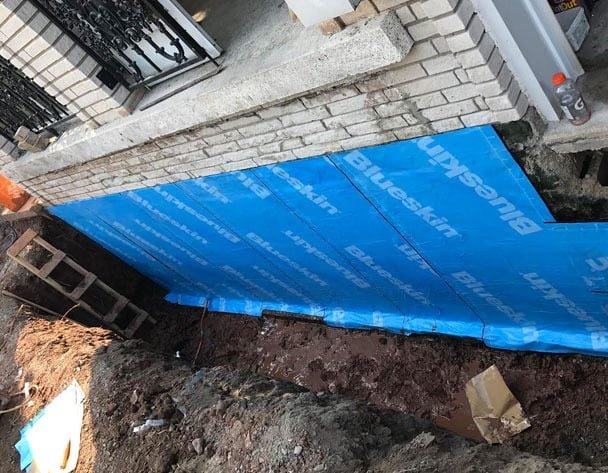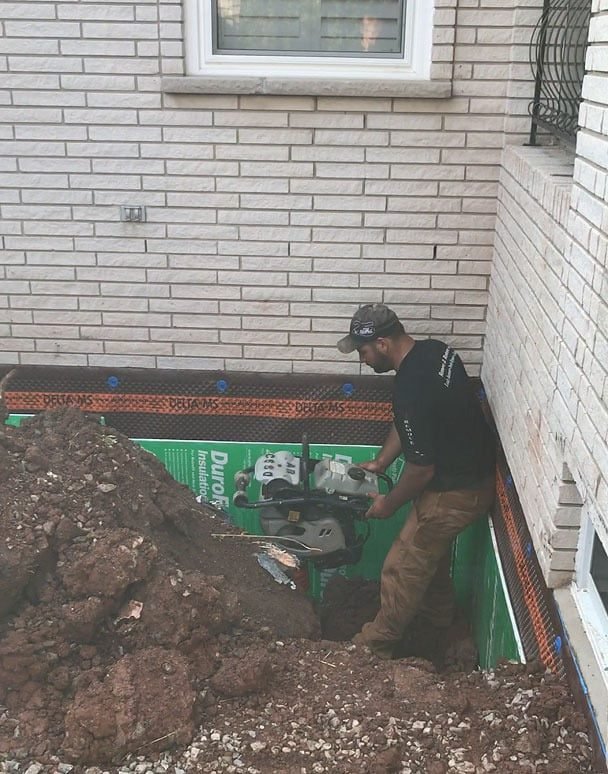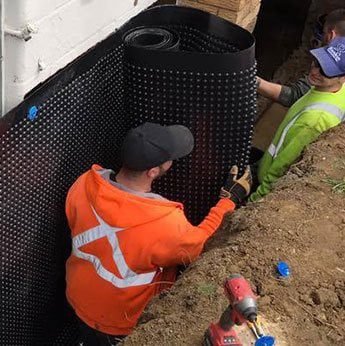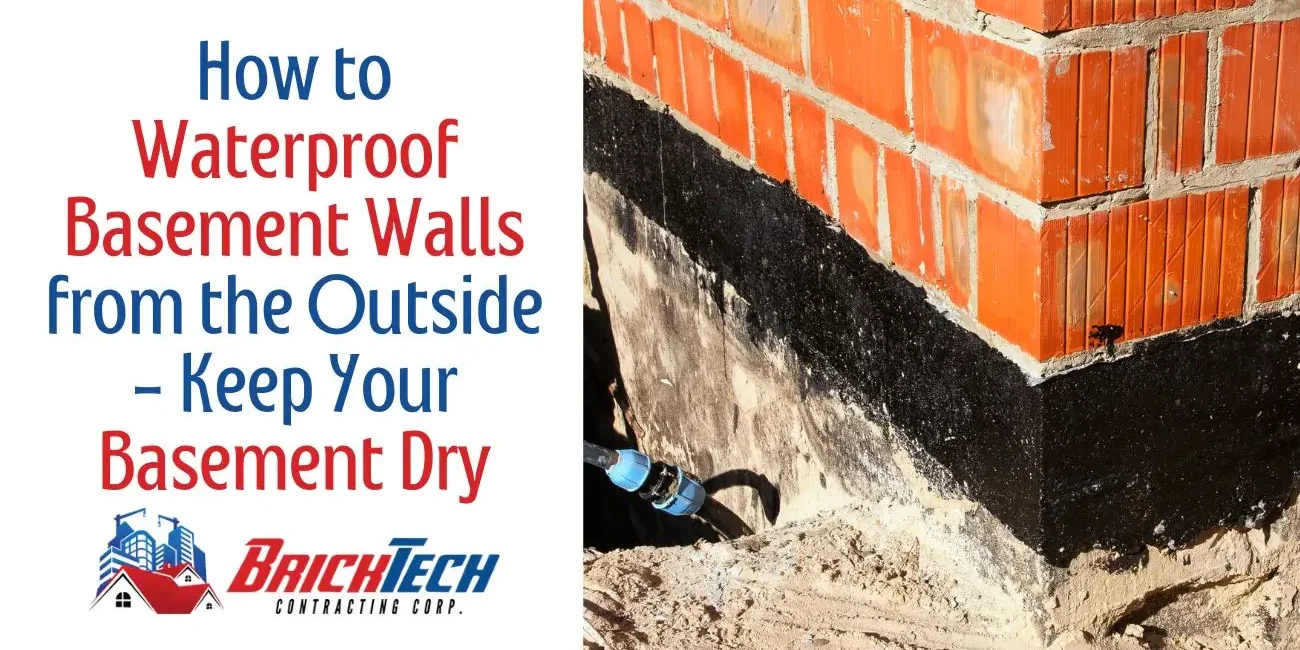Water in the basement can be a homeowner’s nightmare. Whether it’s minor dampness or significant flooding, water seepage through basement walls is a common problem that can lead to severe structural damage and health hazards like mold. Homeowners and DIY enthusiasts alike understand the importance of keeping moisture at bay. This blog post is dedicated to exploring how to waterproof basement walls from the outside, ensuring a dry and safe living space.
In this comprehensive guide, you’ll learn about how to waterproof exterior basement walls, the benefits of waterproofing exterior basement walls, and the step-by-step process for a successful waterproofing project. By the end, you’ll be equipped with the knowledge and confidence to tackle this essential home improvement task.
Understanding the Basement Wall Issue
Common Causes of Basement Wall Water Seepage
Water seepage in basements typically originates from several sources. These include poor soil drainage, hydrostatic pressure, foundation cracks, and inadequate waterproofing systems. Heavy rains or melting snow can exacerbate these issues, allowing water to penetrate your basement walls.
Risks and Consequences of Neglecting Waterproofing
Ignoring basement water issues can lead to serious consequences. Prolonged moisture can weaken the foundation, leading to expensive repairs. Additionally, damp environments foster mold growth, which poses health risks to your household. Addressing these issues promptly through effective waterproofing is crucial for maintaining your home’s structural integrity and health.

Methods of Basement Exterior Wall Waterproofing from Outside
Explanation of the Excavation Process
The first step in exterior waterproofing is excavation. This involves digging around the perimeter of your basement walls to expose the foundation. While it may sound daunting, excavation is necessary to apply waterproofing materials directly to the foundation, ensuring a thorough seal.
Different Waterproofing Materials and Techniques
Various materials and techniques can be used to waterproof basement walls from the outside:
- Concrete Coatings: These thick coatings form a waterproof barrier when applied to the exterior walls.
- Membrane Systems: These involve applying waterproof membranes directly to the foundation. They are highly effective and durable.
- Drainage Systems: Installing a drainage system, such as French drains, can help divert water away from your foundation, reducing hydrostatic pressure.
Concrete Coatings and Sealants Waterproof
Concrete coatings and sealants are popular choices due to their simplicity and effectiveness. These products create a waterproof barrier that adheres to the exterior wall, preventing water from penetrating the foundation.

DIY vs. Professional Waterproofing Basement Walls from Outside
Pros and Cons of Each Approach
Both DIY and professional waterproofing have their pros and cons. DIY methods are waterproofing basement walls from outside cost-effectively and can be accomplished with basic tools and materials. However, they require significant time and effort. Professional waterproofing services offer expertise and advanced solutions but come at a higher cost.
Step-by-Step Guide to DIY Basement Wall Waterproofing
Detailed Instructions on How to Waterproofing Basement Walls from Outside DIY
- Excavation: Carefully dig around the perimeter of your basement to expose the foundation walls. Ensure the excavation is deep enough to access the entire wall.
- Clean the Walls: Remove dirt, debris, and old paint from the exposed foundation walls to ensure proper adhesion of waterproofing materials.
- Apply Waterproofing Material: Choose a suitable waterproofing material, such as a concrete coating or membrane system, and apply it according to the manufacturer’s instructions.
- Install Drainage System: If necessary, install a drainage system like a French drain to direct water away from the foundation.
- Backfill: Once the waterproofing material has cured, backfill the excavation site with soil, ensuring proper grading to direct water away from your home.
Safety Precautions and Tips for a Successful Project Completion
When embarking on a DIY waterproofing project, safety is paramount. Wear appropriate protective gear, such as gloves and goggles, and follow all manufacturer instructions for the materials you’re using. Additionally, ensure proper ventilation if working with chemical-based products.
When to Consider Professional Help for Waterproofing a Basement Wall from the Outside
While DIY waterproofing can be a rewarding and cost-effective solution for some homeowners, there are situations where seeking professional help is advisable. Here are some indicators:
- Severe water damage: Extensive water damage or flooding necessitates professional assessment and repairs to ensure structural integrity.
- Complex foundation issues: Cracked or bowing foundations often require specialized techniques and knowledge for proper repair.
- Extensive excavation: Deep foundations or difficult access points may necessitate professional excavation equipment and expertise.
- Lack of confidence or experience: If you’re unsure about your DIY skills or tackling a complex project, consulting a professional is wise.
Maintenance and Long-Term Considerations
Advice on Regular Maintenance to Ensure Effectiveness
Even the best waterproofing systems require regular maintenance to remain effective. Inspect your exterior walls annually for signs of wear or damage. Clean gutters and downspouts regularly to prevent water from pooling around the foundation.
Discussion on How to Spot and Address Future Issues
Early detection of potential issues can save you from costly repairs. Look for signs of moisture or mold in your basement, and address them immediately. Minor cracks in the foundation can often be repaired with sealants, but larger issues may require professional attention.

Real-Life Examples and Case Studies
Anecdotes and Case Studies of Successful Basement Waterproofing Projects
Homeowners across the country have successfully tackled basement waterproofing projects. One notable example is the Smith family, who faced persistent basement flooding after heavy rains. By excavating around their foundation and applying a waterproof membrane, they transformed their damp basement into a dry, usable space.
Lessons Learned and Tips from Homeowners and Professionals
From these real-life examples, we learn the importance of thorough preparation and choosing the right materials. Professionals often emphasize the value of investing in high-quality waterproofing products to ensure long-term success.
Conclusion
Waterproofing basement walls from the outside is a crucial step in protecting your home from water damage. By understanding the common causes of water seepage, exploring various waterproofing methods, and carefully following a step-by-step guide, you can achieve a dry and safe basement.
Regular maintenance and early detection of potential issues are vital to ensuring the longevity of your waterproofing efforts. Remember, whether you choose to DIY or hire professionals, the key to a successful waterproofing project lies in preparation and attention to detail.
For complex waterproofing projects or situations requiring expertise, consider consulting a professional waterproofing contractor like Brick Tech Contracting Corp. We are a licensed and experienced construction company serving the NYC area, specializing in exterior basement waterproofing and other foundation protection services. Contact us today for a free consultation and protect your home with peace of mind.
By taking these proactive steps, you’ll safeguard your home’s foundation, enhance its value, and create a healthier living environment for you and your family. Dive into this essential home improvement project with confidence, and enjoy the peace of mind that comes with a dry, secure basement.








